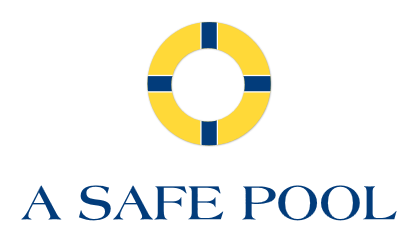If you’re a new parent who owns a swimming pool, baby swimming may be something you’re already considering. Infant survival swimming classes are widely available. Online videos abound offering instruction, demonstrations, and advice for parents of babies who want to introduce them to the water early. Even with training, however, a backyard pool presents hazards that you should be aware of before introducing your child. While proper instruction and supervision can make it a great idea for your child, care needs to be taken to make sure they’re still being protected from themselves and the pool.
What Baby Swimming Is
If your plan is to take your child to classes and have your infant joint you in your daily laps, you will be disappointed. Swimming for infants is more about avoiding tragedy than preparing to be the next Michael Phelps. This kind of swimming instruction is about increasing their ease in the water to avoid panic, and giving them the necessary skills to kick, turn themselves over onto their back in the water, and float until a supervising adult can lift them out of the pool. You can absolutely have fun with your baby in the pool, and baby swimming classes can help that process, but their primary focus is to establish infant survival swimming skills.

Before You Begin
Prior to introducing your child to the water, there are a few things you need to do as a responsible pool owning parent.
- Get Certified – Get certified in infant, child, and adult CPR and first aid by the American Red Cross. You’ll learn the skills you need to save lives and treat minor injuries on your own. This certification helps prepare you for a wide range of emergencies and situations, many of which can occur in and around swimming pools. Classes are regularly available at gyms, health departments, and libraries, or use their class finder. They also regularly offer water safety classes and certify lifeguards, making them a great source for general pool safety tips.
- Improve Your Pool Safety – While the goal of baby swimming may be self-rescue, it’s a skill that they will hopefully never need to exercise outside a controlled class environment. Adding safety pool fences and safety pool covers to your backyard pool can help prevent dangerous situations requiring them to use their infant survival swimming training.Safety covers are anchored firmly to rails along the pool’s edge that are able to prevent someone who slips, falls, trips, or crawls toward the pool surface from ending up in the water. An automatic pool safety cover is easy to use, holds much more than the weight of an infant, and helpfully keeps debris out of your pool.
Safety pool fencing is designed to be unclimbable and has gaps small enough that a child can’t crawl underneath, slip through gaps, or wiggle their way in. The gates are self-closing, self latching, and can only be opened from the inside or by a key. This makes them an excellent deterrent to curious or intrepid children that decide to sneak outside while their parent’s back is turned, so they can get some baby swimming in unattended.
- Know Your Chemistry – Maintaining a pool’s pH takes practice and chemicals. Brush up on your best practices, as you’ll want to keep the water properly conditioned to avoid irritating your baby’s sensitive skin. While an adult may have a wider threshold of tolerance, an infant won’t. Make sure when it’s time to practice baby swimming at home, they have a comfortable pool to get familiar with water in.
Learning Infant Survival Swimming
When your infant and pool are ready for baby swimming classes, make sure they’re getting the pool time and conditions they need.
- Enroll Them In Classes – Real classes with an experienced infant survival swimming instructor get real results. Yes, there are tons of online resources with information about teaching infants to swim, and some are good. Other videos or blogs may be misinformed or downright dangerous. Using a trained and experienced instructor helps make sure your child is safer and provides an expert resource to you when you have questions about continuing their skill-building at home.
- Always Provide Close Supervision Around Water – Even if they are the star of their baby swimming class, they aren’t ready for solo water aerobics yet. Anytime they’re near the swimming pool, someone–either a parent or designated responsible adult–should keep them as the center of their attention. Despite their training, it takes seconds for a tragedy to happen, whether due to panic, a head bump, or some other factor. Competent adult supervision is still the number one safety feature infants need at the pool.
A Safe Pool Is A Fun Pool
Managed properly, baby swimming can be a great step toward a lifetime of safer water fun. If you have any questions or would like to find out how affordable the peace of mind that comes with safety pool covers and fences can be, call our experts at 866-651-POOL. Check back with the A Safe Pool blog regularly for the latest information about pool safety and keeping your pool ready for fun.
